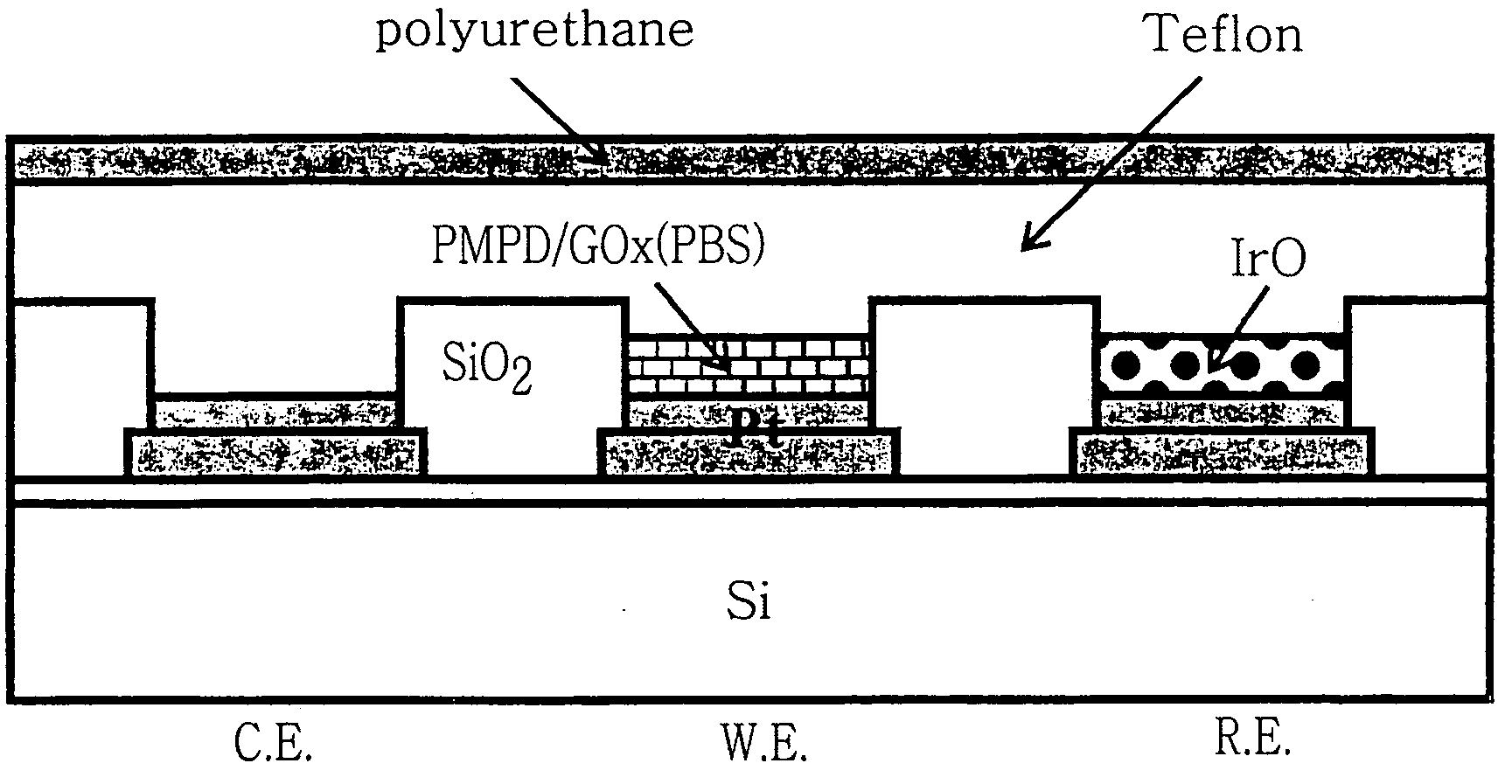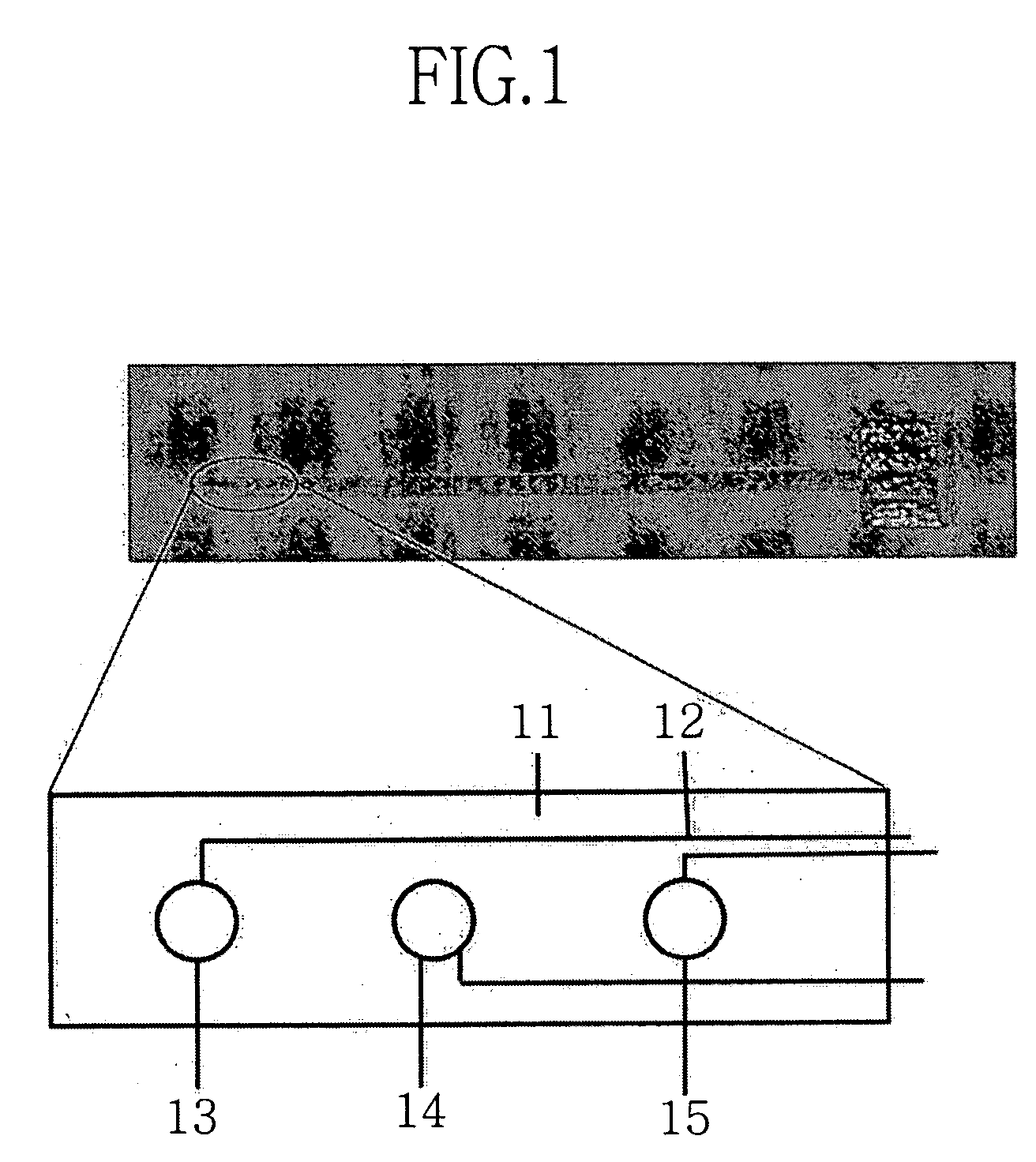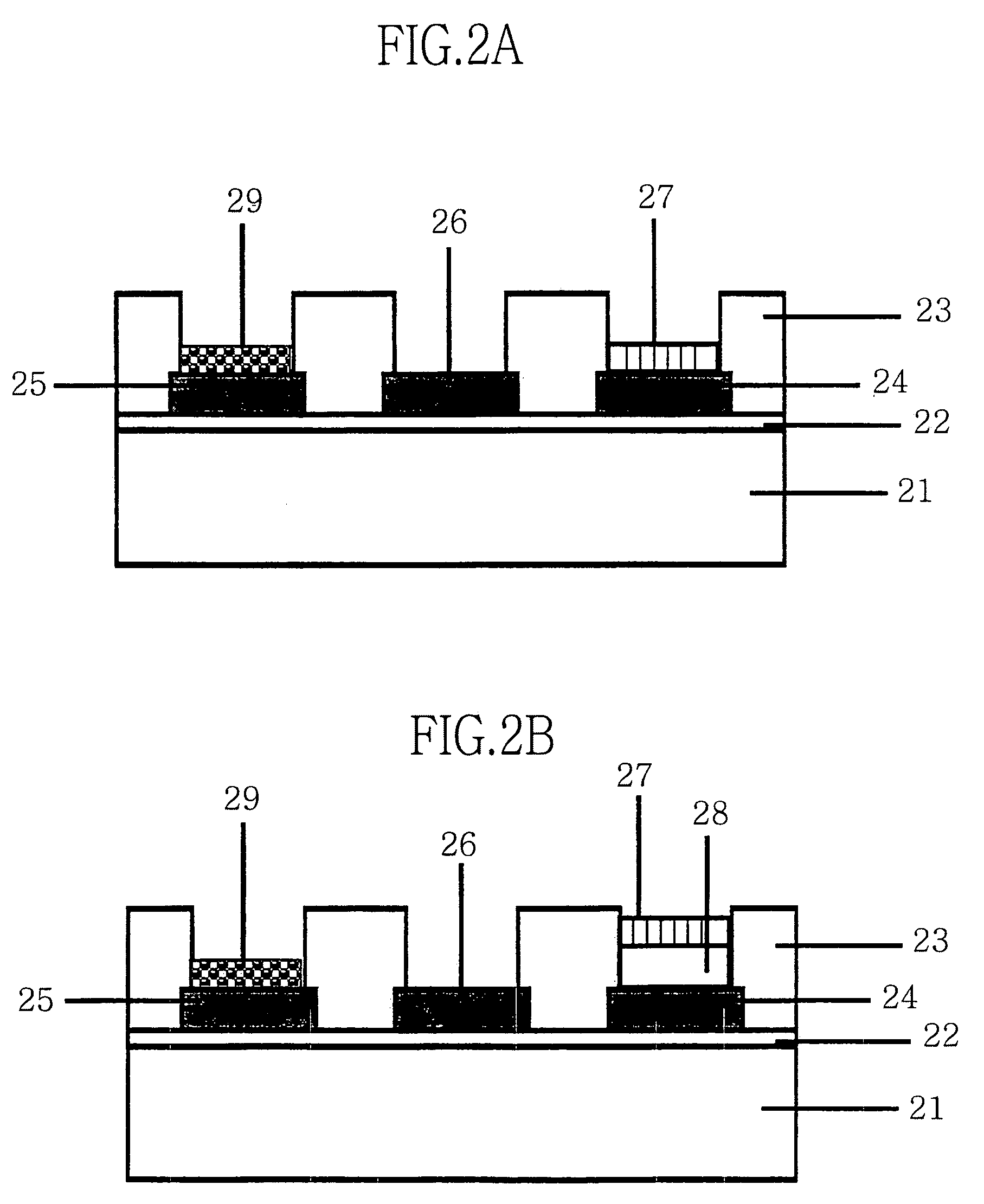Micro reference electrode of implantable continous biosensor using iridium oxide, manufacturing method thereof, and implantable continuous biosensor
a biosensor and continous technology, applied in the field of microfabricated reference electrodes of implantable continous biosensors, can solve the problems of affecting the output current, application, application, etc., and achieve the effect of good stability and favorable potential chang
- Summary
- Abstract
- Description
- Claims
- Application Information
AI Technical Summary
Benefits of technology
Problems solved by technology
Method used
Image
Examples
experimental example 1
[0052] 1,3-Phenylenediamine (MPD), hydrogen peroxide(30% solution in water), glutaraldehyde(25% solution in water), Teflon(60 wt % dispersion in water), IrCl4, oxalic acid and K2CO3 were purchased from Aldrich for use in the experiment of the present invention. PBS(PH 7.4), glucose oxidase (GOx)(EC 1.1.3.4), glucose, poly-L-lysine hydrobromide(MW=15000-30000) were obtained from Shigma. PU(SG85A) was purchased from Thermedics Inc.(Wobum, Mass.).
[0053] This experiment was performed with a 5-inch-diameter silicon wafer. Two photomasks were used during the entire processes. After a standard cleaning procedure, a low temperature silicon oxide layer having a thickness of about 1 μm was deposited by an LPCVD method. A titanium tungsten (TiW) adhesive layer (˜750 Å) and a Pt layer(˜2000 Å) were deposited by a magnetron sputtering method. Next, a photoresist layer was coated and then exposed by a first mask. The exposed regions of Pt layer were etched by a wet etching process in 8:7:1 solut...
experiment example 2
[0068] A solution for the second example was prepared by dissolving 0.002-100 mM HOOCCOOH.2H2O(oxalic acid) in 0.002-100 mM K3IrCl6 water solution, adding K2CO3 to make more than pH 9 and leaving as it is for several days. Until 10 mC / cm2 to 1000 mC / cm2 charges flow in this solution, the constant current was applied to Pt or Au to form the iridium oxide film.
experiment example 3
[0069] An iridium oxide film for this example was fabricated as follows. First, 75 mg IrCl4 was put into 50 ml distilled water to melt while stirring for 30 minutes, and then 0.5 ml of 30% H2O2 was added and was stirred for 10 minutes. Next, 250 mg HOOCCOOH.2H2O (oxalic acid) was added therein and was stirred again for 10 minutes, and then K2CO3 was added to make pH 10.5. The solution of pH 10.5 was stabilized for 2 days at room temperature. Thereafter, the iridium oxide film was formed by applying a current of 0.5-1 mA / cm2 for 6 minutes or by repeating the potential 100 times with a potential range of 0.0 V to 0.60 V with respect to the Ag / AgCl reference electrode.
[0070] Although the above description has been made with regard to the iridium oxide film, other meal oxide films such as a platinum oxide film, ruthenium oxide film, a lead oxide film, a tungsten oxide film, a titanium oxide film and a zirconium oxide film also have a favorable pH dependence of the potential change, so ...
PUM
| Property | Measurement | Unit |
|---|---|---|
| thick | aaaaa | aaaaa |
| area | aaaaa | aaaaa |
| thickness | aaaaa | aaaaa |
Abstract
Description
Claims
Application Information
 Login to View More
Login to View More - R&D
- Intellectual Property
- Life Sciences
- Materials
- Tech Scout
- Unparalleled Data Quality
- Higher Quality Content
- 60% Fewer Hallucinations
Browse by: Latest US Patents, China's latest patents, Technical Efficacy Thesaurus, Application Domain, Technology Topic, Popular Technical Reports.
© 2025 PatSnap. All rights reserved.Legal|Privacy policy|Modern Slavery Act Transparency Statement|Sitemap|About US| Contact US: help@patsnap.com



